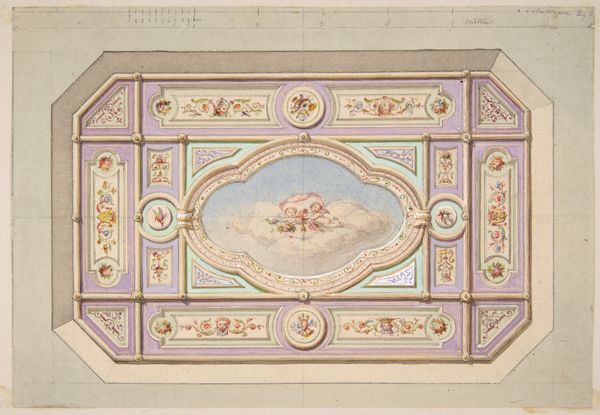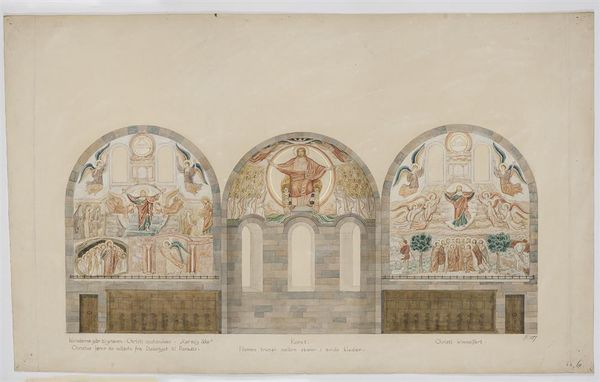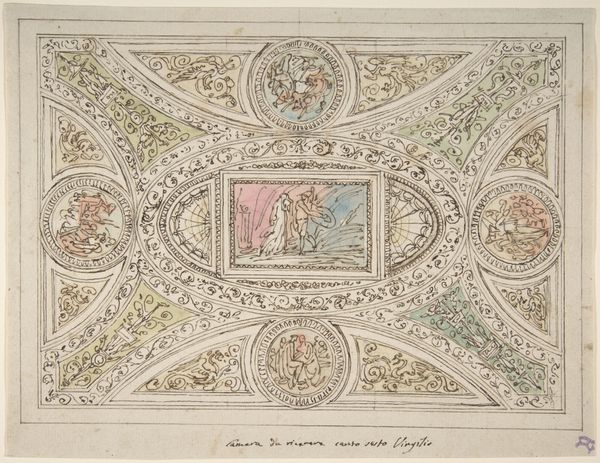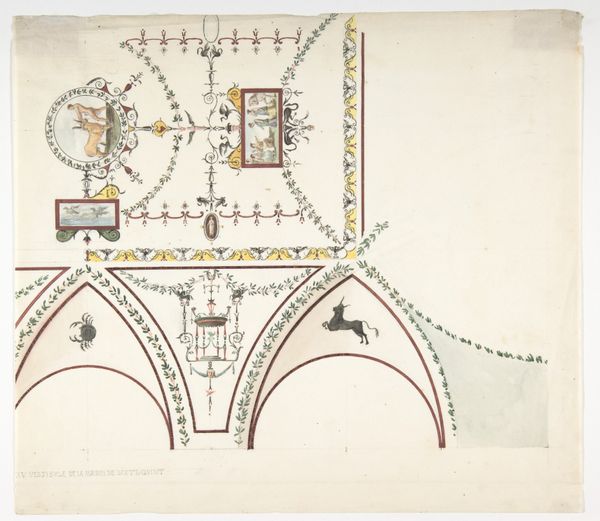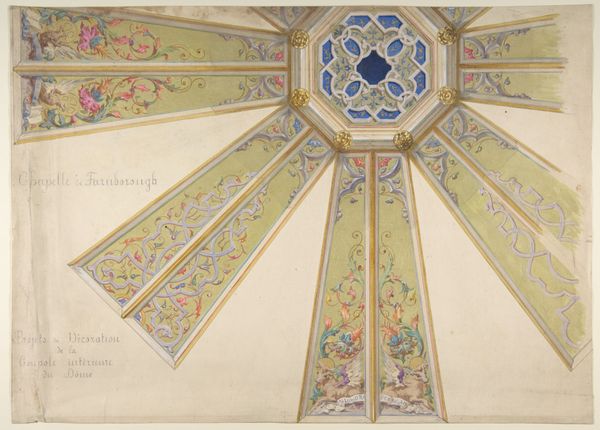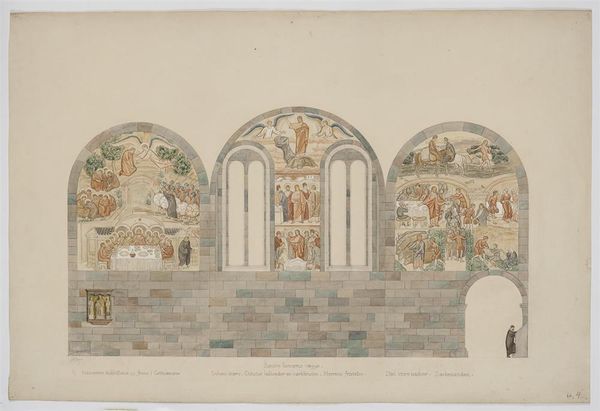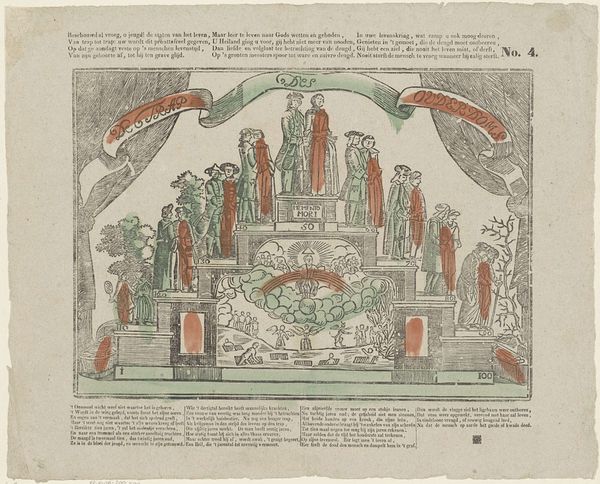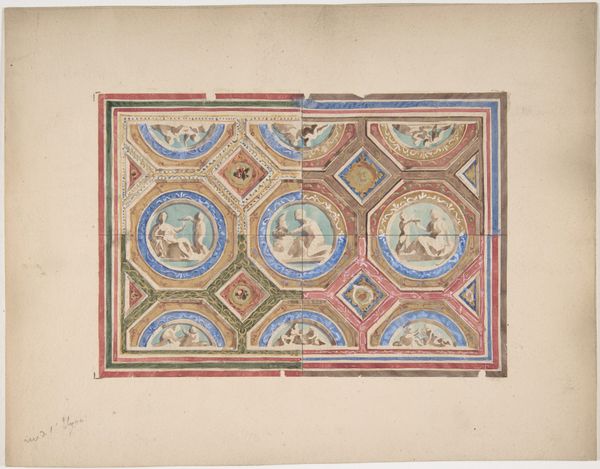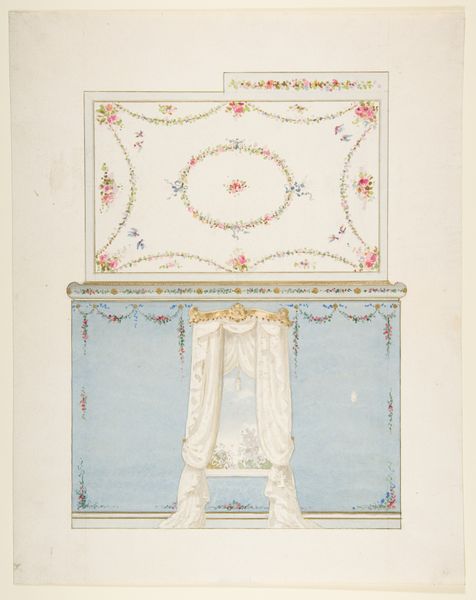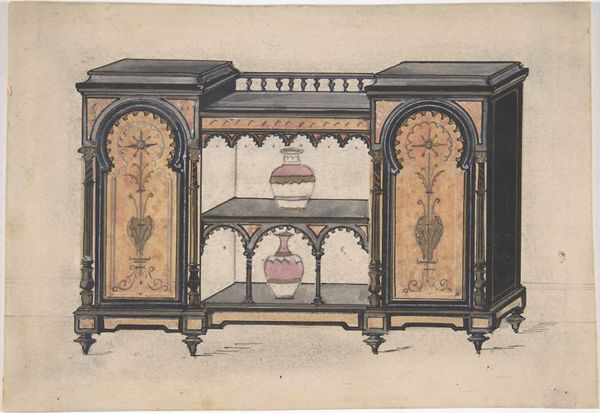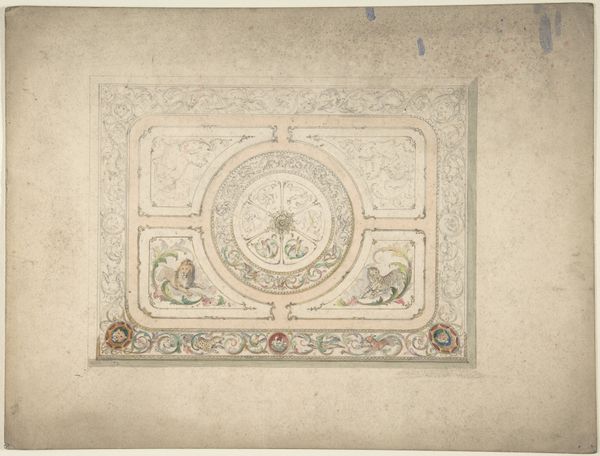
Design for a Ceiling at Théatre Français, Paris 1810 - 1838
0:00
0:00
drawing, print, watercolor, architecture
#
drawing
#
medieval
#
water colours
# print
#
historic architecture
#
11_renaissance
#
traditional architecture
#
watercolor
#
history-painting
#
watercolor
#
architecture
Dimensions: 12 11/16 x 15 11/16 in. (32.3 x 39.9 cm)
Copyright: Public Domain
Curator: Here we have Aimé Chenavard’s “Design for a Ceiling at Théâtre Français, Paris,” rendered between 1810 and 1838 using watercolor and print techniques. Editor: My first impression is of a glorious explosion of color, reminiscent of illuminated manuscripts. It’s incredibly ornate and symbolic. Curator: Indeed. Chenavard, known for his history painting, here envisions a theater ceiling infused with classical and perhaps medieval allusions. We can see what look like scriptural figures set within patterned gold leaf and richly textured borders, typical of luxury interior design. Editor: Exactly. Notice the concentric bands populated with figures, their faces turned towards a central point. And below that, narrative panels depicting classical plays? It’s a very deliberate layering of cultural memory. Curator: From a production standpoint, the watercolor wash allowed for precise application, while the use of printing techniques must have aided in the accurate duplication of these geometric forms and possibly text. These images imply a patron class which would consume theater regularly as part of social life. Editor: Absolutely. And speaking of symbols, these radiating figures resemble a heavenly host or even classical muses. Theatre becomes sanctified, a space for enlightenment. This theatrical design also adopts specific visual cues, consciously reinforcing theatre’s importance and tradition. Curator: And look at the inscription: “Plafond du Théâtre Français"— the intention is clearly declared! So many stages of production must be planned from these original artist renderings; what do we read of French craftsmanship in this moment of design? Editor: Thinking about the cultural context and how these stories of the past intertwine with those of the present...it makes this ceiling much more than decoration. It becomes a statement. Curator: A very apt thought. It is this confluence of craft and careful placement, reflecting values about art itself which is quite enlightening. Editor: Absolutely, and on closer look, the conscious decisions regarding symbolic visual culture point to ways buildings are planned to house knowledge and tradition.
Comments
No comments
Be the first to comment and join the conversation on the ultimate creative platform.
